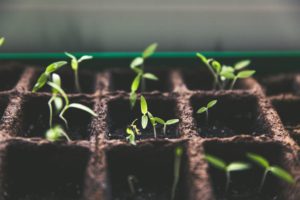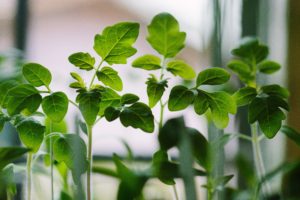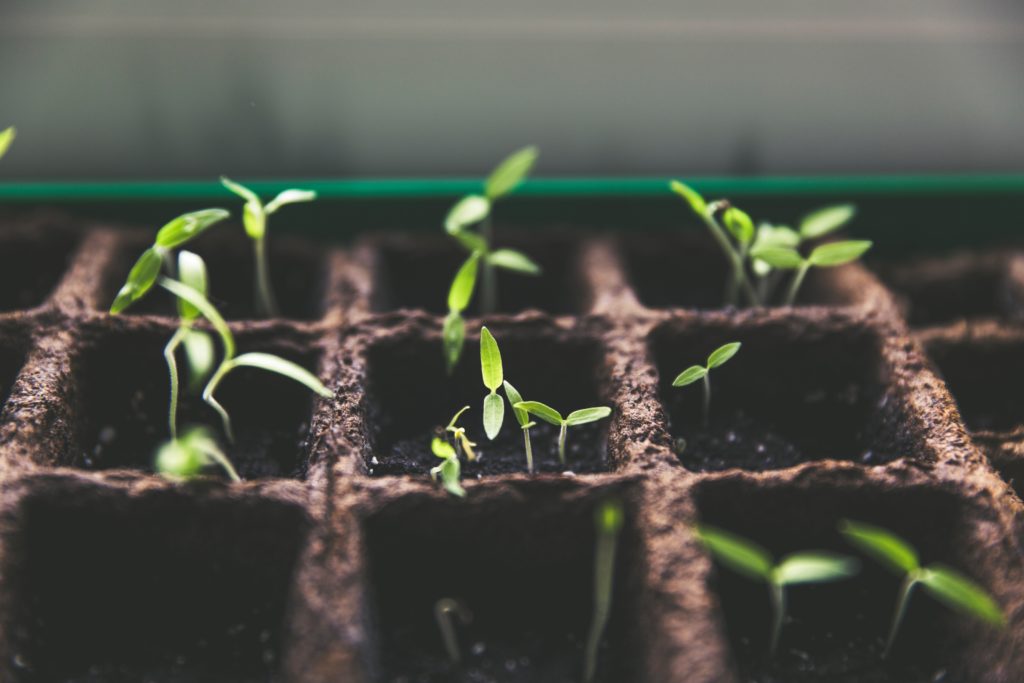Last week I wrote about some great garden seeds to start right now. But as we all know, not all seeds are created equal! There are some seeds that seem to be tricky year after year, some that always germinate and grow just fine even with loads of neglect, and some that act so different year to year that you’d swear they were actually different crops altogether.
 I want to help set you all up for success with some tips and tricks for seeds that you may have trouble with. Not all of these methods work for all seeds all the time, but it’s worth experimenting to see if one or two of them may help you if you run into any trouble with more standard methods.
I want to help set you all up for success with some tips and tricks for seeds that you may have trouble with. Not all of these methods work for all seeds all the time, but it’s worth experimenting to see if one or two of them may help you if you run into any trouble with more standard methods.
Trick # 1: Soak Your Seeds Overnight Before Sowing
This is the classic method for starting big seeds with thick coats, such as sweet peas. There are all sorts of other tricks for starting sweet peas (scratching their surfaces with sandpaper or nicking them with nail clippers are two tricks that come to mind), but they all aim to start to break down or crack open this thick seed coat. For me, soaking in lukewarm water for 8 hours before sowing in soil mix works just fine.
Trick # 2: Cold Stratify Your Seeds (IE Put Them In The Freezer)
Some seeds, such as delphinium and annual larkspur, need a period of cold in order to break dormancy and germinate. When this is the case, you don’t need any fancy equipment. Simply scatter them in a small zip-lock bag with moist seeding mix or sand, put in the freezer for two weeks, and then sow as normal. Viola!
Trick # 3: Surface Sow Your Seeds
 Tons of tiny seeds are said to ‘need light to germinate’. The easiest way to accomplish this is just to sow them on the surface of your tray or pot, and rather than covering them with soil, you simply gently press them into the top of the soil surface. This way they’re nice and secure and they won’t blow or wash away, but they’re also exposed to light. When in doubt about any super tiny seeds, it’s a good bet that they need light. Try them both ways and see what happens!
Tons of tiny seeds are said to ‘need light to germinate’. The easiest way to accomplish this is just to sow them on the surface of your tray or pot, and rather than covering them with soil, you simply gently press them into the top of the soil surface. This way they’re nice and secure and they won’t blow or wash away, but they’re also exposed to light. When in doubt about any super tiny seeds, it’s a good bet that they need light. Try them both ways and see what happens!
Trick # 4: Go Back To Kindergarten With The Paper Towel Method
I was having trouble germinating annual phlox for the garden last year. Then another flower farmer suggested the age-old trick of packing them between damp layers of paper towel until they germinated, and then promptly moving them to soil mix in trays. This not only worked like a charm but it allowed me to see which seeds germinated and which ones didn’t. The ones that didn’t have any life to them after a few days got tossed in the compost bin, whereas the successful ones went on to grow beautiful plants.
Trick # 5: Don’t Bury Your Seeds Too Deep
It’s common for new gardeners to want to plunge their seeds deep into their soil mix. But did you know that most seeds only want to be buried about as deep as they are wide? This is why I always take my seeds out of their packets and examine them before I sow. If they’re tiny, I sow them right on the surface. If they’re huge, I poke a semi-deep hole with my finger or a pencil. If I poked the holes before looking at the seeds, I may miscalculate the depth.

And there you have it! What other tricks have you gardeners out there picked up along the way? I’d love to hear!


 Family
Family

